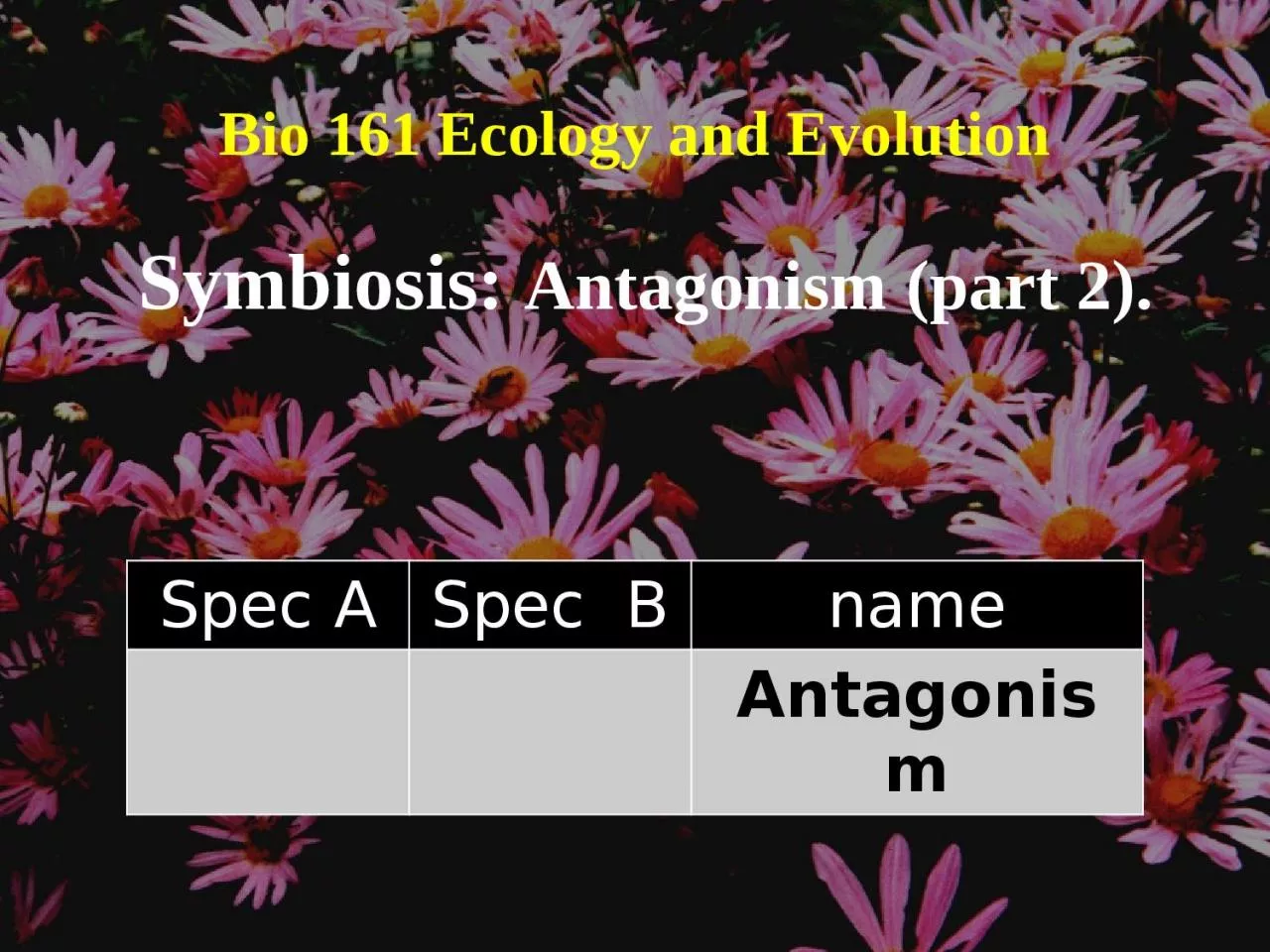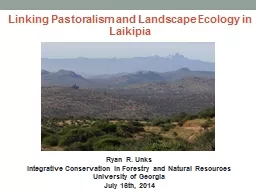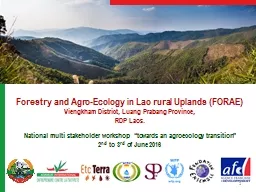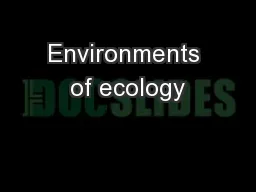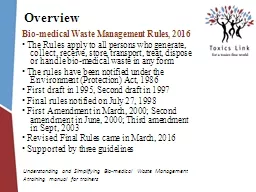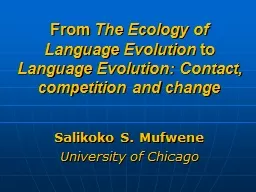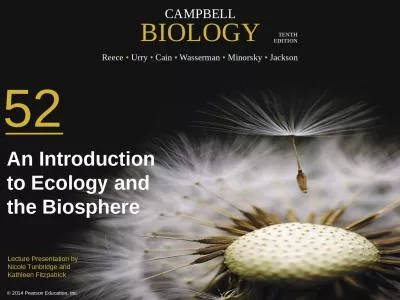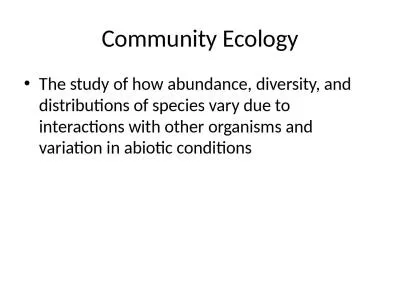PPT-Bio 161 Ecology and Evolution
Author : maisie | Published Date : 2023-12-30
Symbiosis Antagonism part 2 Spec A Spec B name Antagonism Antagonisms Prey and predator are differently motivated Whereas the prey runs for its life the predator
Presentation Embed Code
Download Presentation
Download Presentation The PPT/PDF document "Bio 161 Ecology and Evolution" is the property of its rightful owner. Permission is granted to download and print the materials on this website for personal, non-commercial use only, and to display it on your personal computer provided you do not modify the materials and that you retain all copyright notices contained in the materials. By downloading content from our website, you accept the terms of this agreement.
Bio 161 Ecology and Evolution: Transcript
Download Rules Of Document
"Bio 161 Ecology and Evolution"The content belongs to its owner. You may download and print it for personal use, without modification, and keep all copyright notices. By downloading, you agree to these terms.
Related Documents

